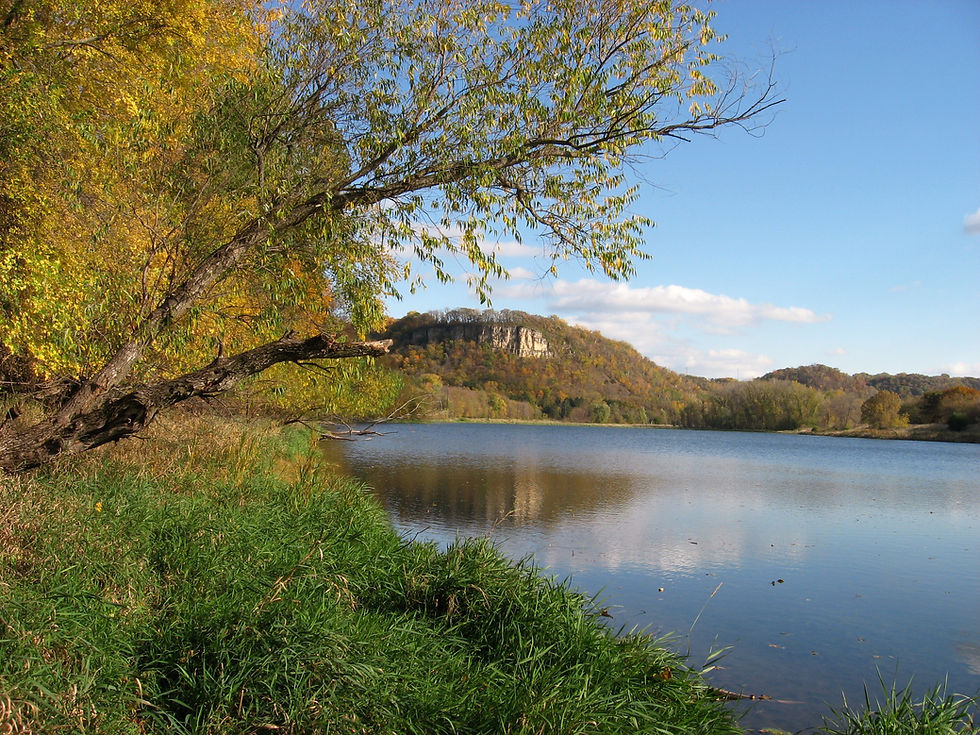Cross Country Skiing Ends- Spring Just Around the Corner
- Bruce Ause
- Feb 12, 2017
- 2 min read

Bald Eagle Nest near Wacouta Pond
Unless we receive a big dump of spring snow, it looks as if my cross country skiing outings in Wacouta have come to an abrupt end. On a recent ski tour in the area around Wacouta Pond, I observed an eagle nest that is visible from the observation area at the base of Rattlesnake Bluff. It can be located with a pair of binoculars looking at a bearing of 200 degrees. Once the trees leaf out, it will no longer be visible.

Eagle Nest Up Close
This very large six year old nest is at least 5 feet deep and 7 feet wide and has been used every year since it was established. It is quite possible that the occupants have been responsible for the predation of the Rattlesnake Bluff peregrine falcon eyasses in recent years. Even though the Minnesota DNR announced an active eagle nest for their eagle cam in the Metro on the end of January, nesting in our area doesn't usually commence until the end of February.

Beaver Lodge
On recent ski outings on Wacouta Bay, I have come across two active beaver lodges. Beaver are quite common in this area because of the extensive patches of willow along the riverbank.

Muskrat Houses
I have also observed a few muskrat houses in the bay this winter. Because of a shortage of cattails and arrowhead tubers and a high rate of sedimentation, good muskrat habitat is almost non-existent along this stretch of the river anymore. The high river levels since last fall may have had a part to play in allowing these few muskrats to survive this winter.

Hoarfrost on top of a muskrat house
The best way to verify that a muskrat or beaver house is occupied is to look for hoar frost at the top of the house during very cold weather. The moisture given off from their breathing activity will rise and condense of cold objects.

Black Squirrel
One of the more interesting visitors to our bird feeding station this winter has been a black squirrel. Over the years, I have observed black squirrels in the Wabasha and Lake City areas but never in Wacouta. Black squirrels are a melanistic form of the eastern gray squirrel and are quite rare.

Skunk
Raccoons and skunks den up early in winter and stay inactive for several weeks. They are not true hibernators so during warm weather periods in winter, that will sometimes come out and wander around on the snow leaving their tracks behind. If warm weather continues, this can definitely be a sure sign of spring. I have observed both skunk and raccoon activity in the past week.

Raccoon Tracks in the Snow

Black capped Chickadee
I have also been hearing another sign of the arrival of our next season. It is the spring call of the black-capped chickadee "fee' bee-ee".




Comments